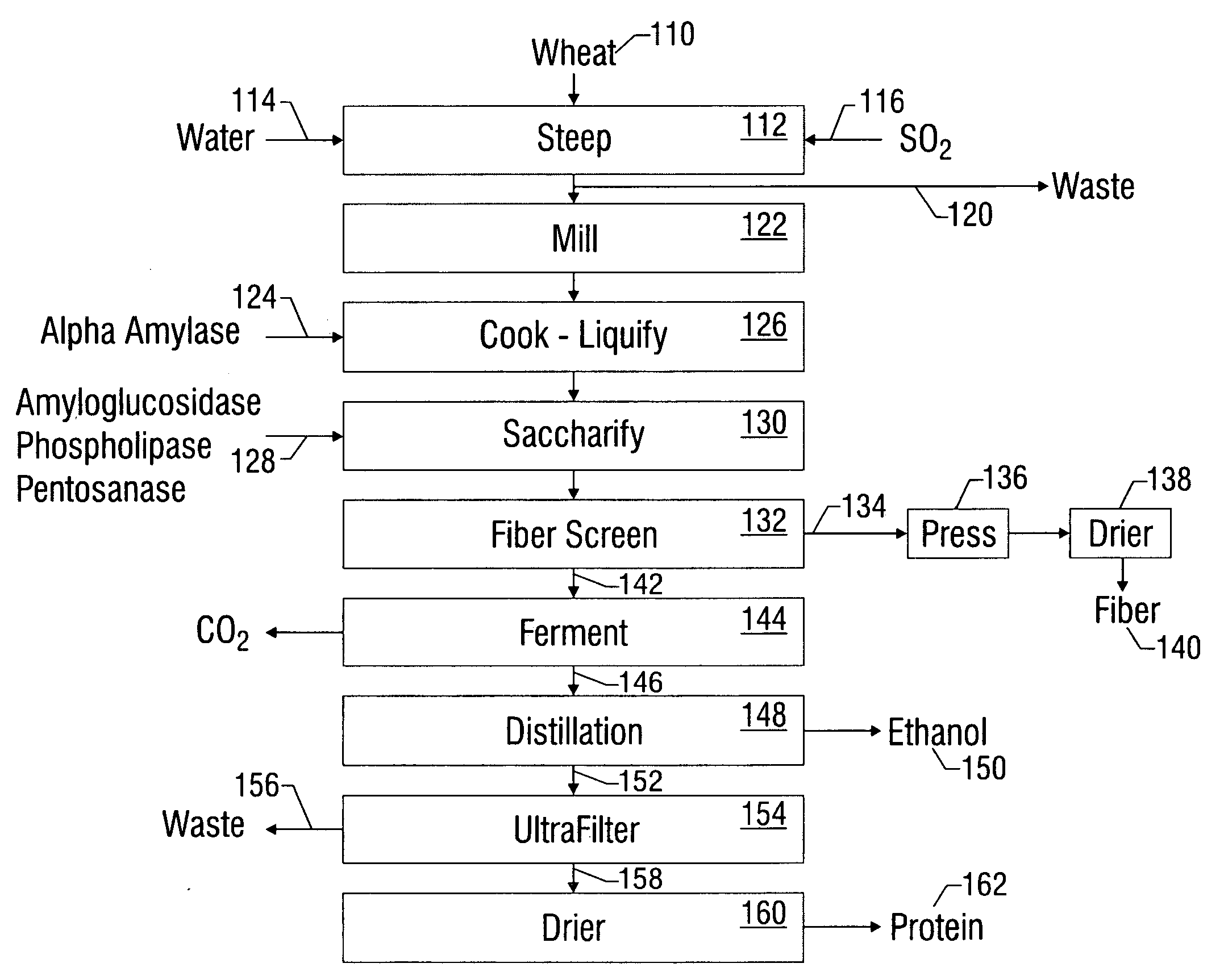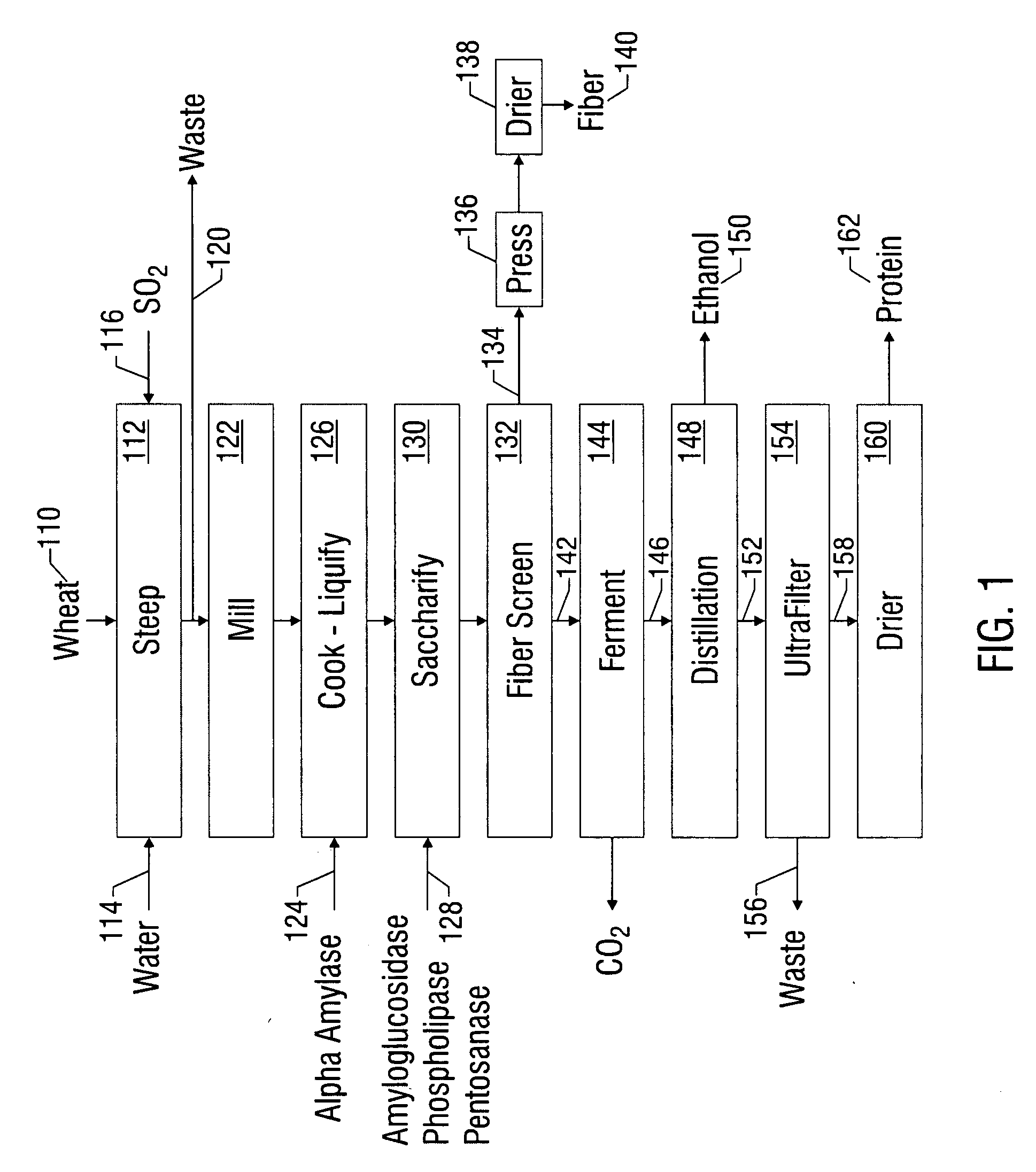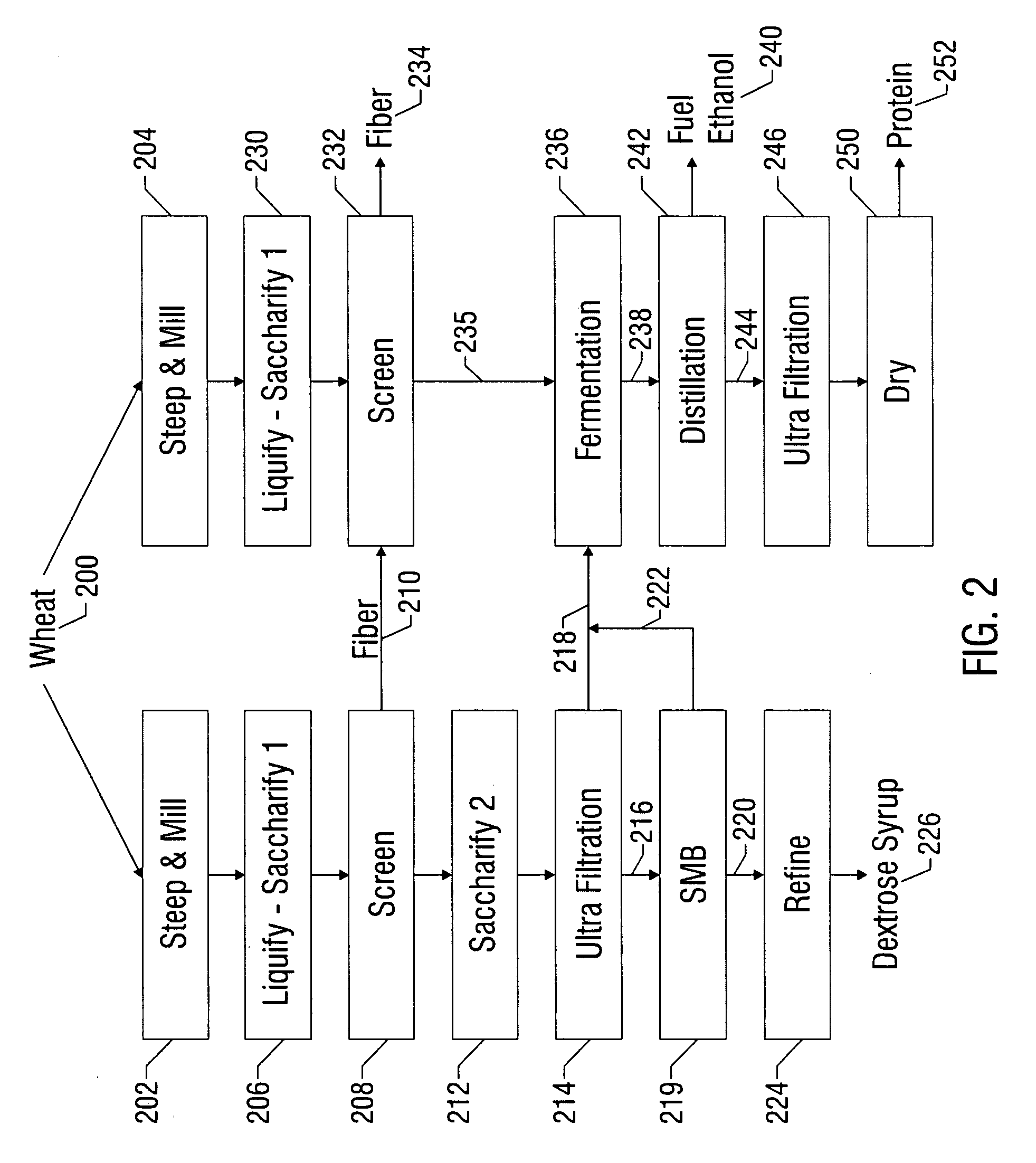Grain wet milling process for producing ethanol
a technology of ethanol and wet milling, which is applied in the field of grain wet milling process for producing ethanol, can solve the problems of uncertain previous-known wheat processing process, negative effect of wheat processing economics, and low yield of starch, dextrose and protein
- Summary
- Abstract
- Description
- Claims
- Application Information
AI Technical Summary
Benefits of technology
Problems solved by technology
Method used
Image
Examples
example 1
[0051] A batch of whole wheat weighing 200 kg (dry solids (DS) 88.8%, protein 11.6% and ash 1.4%) was prepared by screening to remove stones and other unwanted material. This 200 kg of wheat was mixed with 550 liters of water in a 1 cu. meter tank. The mix was heated and kept at a temperature of 50° C. and sulphur dioxide was added as a 6% weight solution to a total of 1000 ppm. The pH of the mix was pH 6.1 and it was held for 18 hours.
[0052] At the end of this time the softened whole wheat was milled in a disc mill with toothed plates, with the complete batch being milled in 2 hours. To this whole batch of slurried wheat 94 g of an alpha-amylase enzyme, Liquozyme Supra, supplied by Novozyme, was added, and the batch was then jet cooked at 100° C. This took a total time of 1 hour. It was then held for a further 3 hours at 85° C. in the 1 cubic meter tank for liquefaction to complete.
[0053] The temperature of the liquefied mixture was reduced to 62° C., and the pH was reduced to pH...
example 2
[0080] The material produced in Example 1 (a), batch 1, was found in the analysis to contain too much dextrose, leading to problems when drying this material. Laboratory tests were carried out in an attempt to reduce this dextrose level.
[0081] A sample of the retentate from batch 1, weighing 134.7 g was further dewatered on a 0.45 micron filter paper in a Buchner funnel in the laboratory. The analysis of feed, filtrate and the cake on the filter are shown in Table 3. The filtration on a 47 mm diameter filter was very slow, taking about 2 hours.
[0082] A portion of the cake after this filtration weighing 12.7 g was slurried with 12.8 g of distilled water to make the feed for a further filtration. This was also carried out on a 0.45 micron filter paper in a Buchner funnel. The analysis of the feed, the filtrate and the filtered cake are given in Table 5.
[0083] After these further two filtrations the protein cake still contained 5% dextrose on a dry solids basis.
[0084] These tests s...
example 3
[0085] A) Whole wheat was processed continuously in a pilot plant. The whole wheat used in this pilot plant was first screened to remove straw and stones. It was fed at a rate of 400 kg / hr into the top of a steep tank. This tank was vertical with a conical bottom and a volume of 20 m3. Water was fed into the steep tank from the bottom to flow counter-current to the wheat, which flowed down and exited the tank from the bottom of the cone. Into the water was added 1000 ppm of SO2. The steep was operated in a continuous manner.
[0086] The residence time of the wheat in the steep tank was 16 hours, the temperature was 48° C. and the water flow was 800 liters / hour. The wheat exiting from the steep tank was first screened on a 1000 micron DSM screen to separate the wheat from water. It was then milled in mill which has a rotating toothed disc. The steep water was sent to waste
[0087] The milled wheat in a water slurry was then held in a small buffer tank. The pH of the slurry was adjusted...
PUM
 Login to View More
Login to View More Abstract
Description
Claims
Application Information
 Login to View More
Login to View More - R&D
- Intellectual Property
- Life Sciences
- Materials
- Tech Scout
- Unparalleled Data Quality
- Higher Quality Content
- 60% Fewer Hallucinations
Browse by: Latest US Patents, China's latest patents, Technical Efficacy Thesaurus, Application Domain, Technology Topic, Popular Technical Reports.
© 2025 PatSnap. All rights reserved.Legal|Privacy policy|Modern Slavery Act Transparency Statement|Sitemap|About US| Contact US: help@patsnap.com



